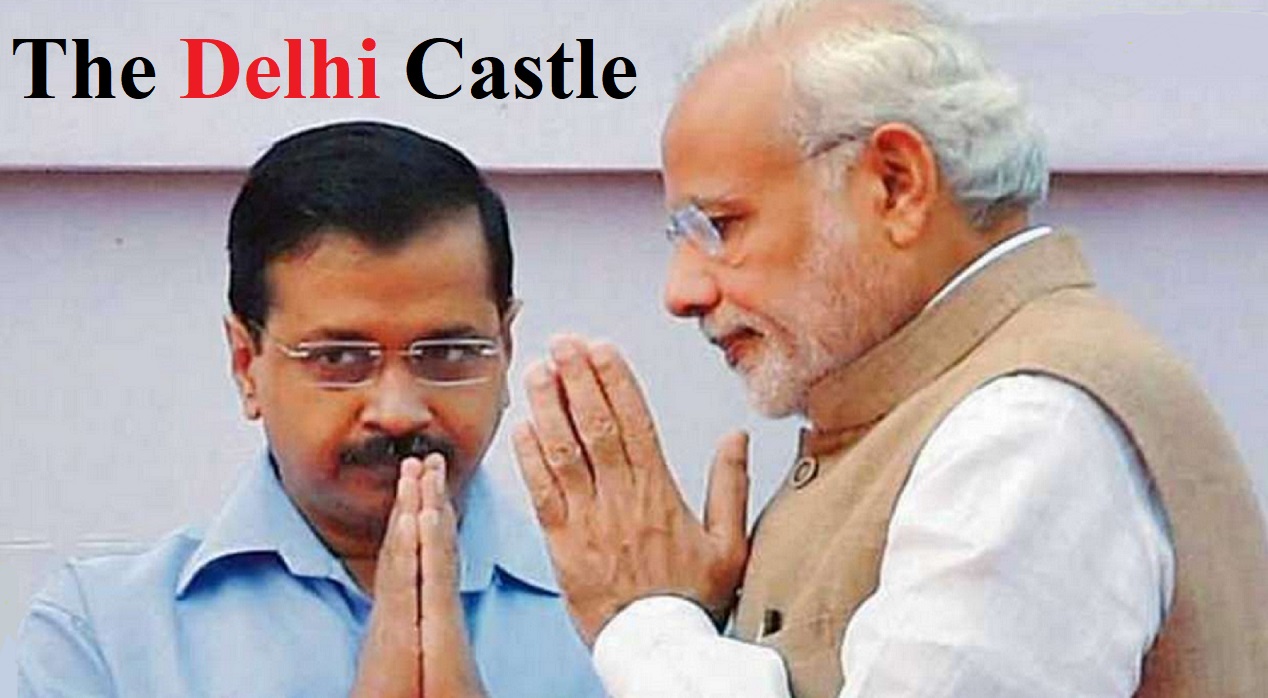
The AAP versus BJP contest goes a long way now following the Delhi MCD polls
The word ‘aap’ is generally a mark of respect in Indian culture. Has the political party that came to be identified with the same acronym also attained respect in Indian power corridors? An honest answer demands an elaborate decluttering of facts at several levels.
The Aam Aadmi Party has established itself as the next big player in the Indian political arena with brute majorities in Delhi and Punjab State Assemblies. A thumping victory in the recently concluded Delhi Municipal Corporation (MCD) polls has added to the party’s political heft. However, it may still be early to think of its Delhi citadel as impenetrable.
The MCD election outcome is not like the National Capital’s Assembly poll verdict where Arvind Kejriwal’s party had proved all political pundits wrong by decimating all opposition parties, including the BJP. This gave AAP a reputation as a party that had the potential to pose a real challenge to the big boys of the game.
But the first thing you notice about the AAP’s performance in the MCD polls is that while it may have won the right to govern the local body for the next five years, BJP remains a real challenge. The saffron party has performed better than what most psephologists had predicted and did not face a wipeout despite a strong anti-incumbency wave in these elections.
This victory has not come overnight. The Aam Aadmi Party had meticulously prepared for more than a year and by the time the final bugle for the electoral battle was sounded; it had already managed to widen the chinks in the BJP’s armour.
The issues of the piling landfills in Delhi’s outskirts and bad roads found resonance in the streets. Especially, the MCD’s not-so-illustrious record in managing the waste of the National Capital gave it a clear advantage during the campaign. The party was successful in adding cleanliness to its already popular planks of health and education notwithstanding that Kejriwal had smartly attached a string to fulfil his promise of freeing Delhi from its mountains of garbage; it required corporators from the same party as the ruling party MLAs.
Those living in Delhi know well how most Resident Welfare Associations (RWAs) in the city are reduced to a ‘football’ between elected state legislators and their local body representatives whenever they have an issue to sort out. Therefore, any hope of being heard by the civic body was hard to resist for common Delhi voters. In fact, it trumped even the BJP’s ideology as the slogan of ‘Kejriwal ki sarkar, Kejriwal ka parshad (Kejriwal’s government, Kejriwal’s corporator) overshadowed the BJP’s efforts to highlight the benefits of a ‘double engine’ government.
The BJP will have to concede that its mighty election machinery and astute strategy- that has made it such an unassailable political force- failed in the face of the AAP’s ingenuity. It had nothing to offer to Delhi’s voters that could sway them from the influence of several welfare initiatives being run successfully by the Delhi government. While it is easy to dismiss many of these schemes as ‘freebies’, ask a poor migrant who comes to Delhi to provide for the family back home, what it means even if these ‘freebies’ save him a few thousand rupees. Please mind that Delhi has hundreds of thousands of such migrants. Most of them are now loyal Kejriwal voters. The BJP had tried to counter this phenomenon through its own “jahan jhuggi, wahin makaan (House in place of the slum) scheme. But it was too late by then.
The BJP has its task cut out in Delhi. It will have to return to the drawing board to win back the country’s capital. As of now, it not only lacks an effective counter to the AAP’s free water and power supply, but it also does not have a leader to match Kejriwal’s charisma in the National Capital. Proof of this is how the party candidates have fared in wards that come under the Parliamentary constituencies represented by the party leaders. Barring Gautam Gambhir and Dr Harshwardhan along with Manoj Tiwari to some extent, the showing is for all to see in the constituencies of the other four BJP MPs.
The BJP organization at the local level inspires no confidence either. The party does not even have a single leader that can attract first-time or second-time voters. However, the party can still take consolation from the fact that its core vote bank remains intact, which saved it from a rout despite a low voting percentage. In fact, the party has registered an increase in its total vote percentage although this can also be attributed to the Modi factor.
Many voters overlooked the dismal performance of local BJP corporators because of their continued trust in the brand Modi. The party’s total vote share in Delhi has never gone below 32 per cent, a significant feat considering it has never won Assembly elections since 1998. Modi’s charisma has helped BJP retain its hold on MCD even during the heydays of the Sheila Dikshit government and then during Arvind Kejriwal’s rise. The party has polled 39.09 per cent votes this time as compared to 36.08 per cent in 2017. BJP can draw some hope from this increase despite a strong sentiment for change.
Meanwhile, Delhi seems far for the grand old party, and quite literally so. It had managed to win 30 seats in the 2017 MCD elections which BJP had won with 181 seats and the Aam Aadmi Party had to contend with just 48 seats despite its complete dominance over the state Assembly. The party has shrunk to just nine seats in these polls. It is yet another grim reminder of its eroding mass base in Delhi. However, the party has bigger challenges on the national front to live with. The end to the dark night is still in no sight for the Congress party and Delhi is no exception. Its supporters may point towards the rise in its vote share from four to 12 per cent this time around but a closer analysis makes it clear that it owes the rise to Muslim sections who were angry over the release of Bilkis Bano’s convicted rapists and Kejriwal’s idea of introducing Hindu deities in currency notes confused them further.
Besides clearing where it stands on the communal faultline, the Aam Aadmi Party will also have to come clean on a series of corruption allegations against some of its prominent leaders like Manish Sisodia, Satyendra Jain and Kailash Gehlot. These allegations resonated during the MCD poll campaign and prevented the party from sweeping these elections in a similar manner as it did in Vidhan Sabha polls. The accusations also seem to have dented the ‘Mr. Clean’ image that Kejriwal holds so dear to himself. It is also worth mentioning that the party has for the first time defeated the BJP in a direct contest. The Congress was the main challenger to the BJP in previous Delhi Assembly elections and in Punjab as well.
Coming back to the question that we asked in the beginning then; has the AAP come thus far to command the respect as a major national political player? The answer lies in how it fares in its future electoral battles against the BJP. The outcome of these battles will also decide Aam Aadmi Party’s standing as the principal challenger to the BJP. Arvind Kejriwal has tried to pose himself as ‘Abhimanyu’ who can pierce through the BJP’s ‘Chakravyuha.’ His credibility along with that of his party rests on his ability to come good on this image.



















